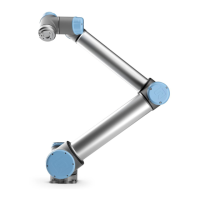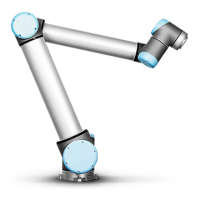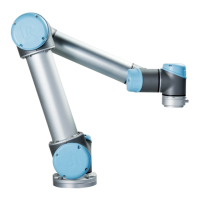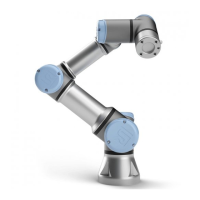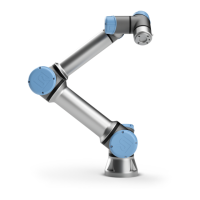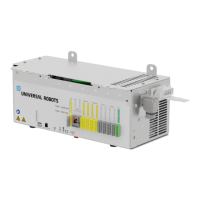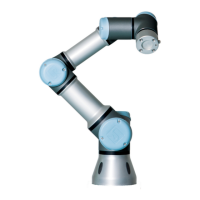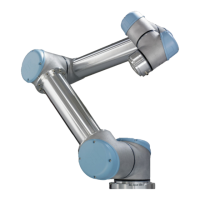Conditional blend
trajectories
This example is a very situational example, but it shows that the robot
program may in a very rare situations calculate program nodes before
execution.
The blend trajectory is affected both by the waypoint where the blend
radius is set and the following one in the program tree.
In this example, the blend around is affected by (WP_1) and (WP_2). The
consequence of this becomes more apparent when blending around (WP_
2) in this example.
There are two possible ending positions and to determine which is the next
waypoint to blend to, the robot must evaluate the current reading of the
digital_input[1] already when entering the blend radius.
That means the if...then expression is evaluated before we actually
reach the destination which is somewhat counter-intuitive when looking at
the program sequence. If a waypoint is a stop point and followed by
conditional expressions to determine the next waypoint (e.g. the I/O
command) it is executed when the robot arm has stopped at the waypoint.
(WP_2)
MoveL
WP_I
WP_1 (blend)
WP_2 (blend)
if (digital_input[1]) then
WP_F_1
else
WP_F_2
WP_I
WP_1
WP_2
WP_F_1
WP_F_2
*
33.2:WP_I
is the initial waypoint and there are two potential final
waypoints
WP_F_1
and
WP_F_2
, depending on a conditional
expression. The conditional
if
expression is evaluated when the robot
arm enters the second blend (*).
User Manual 213 UR16e
Copyright © 2009–2024 by UniversalRobotsA/S. All rights reserved.

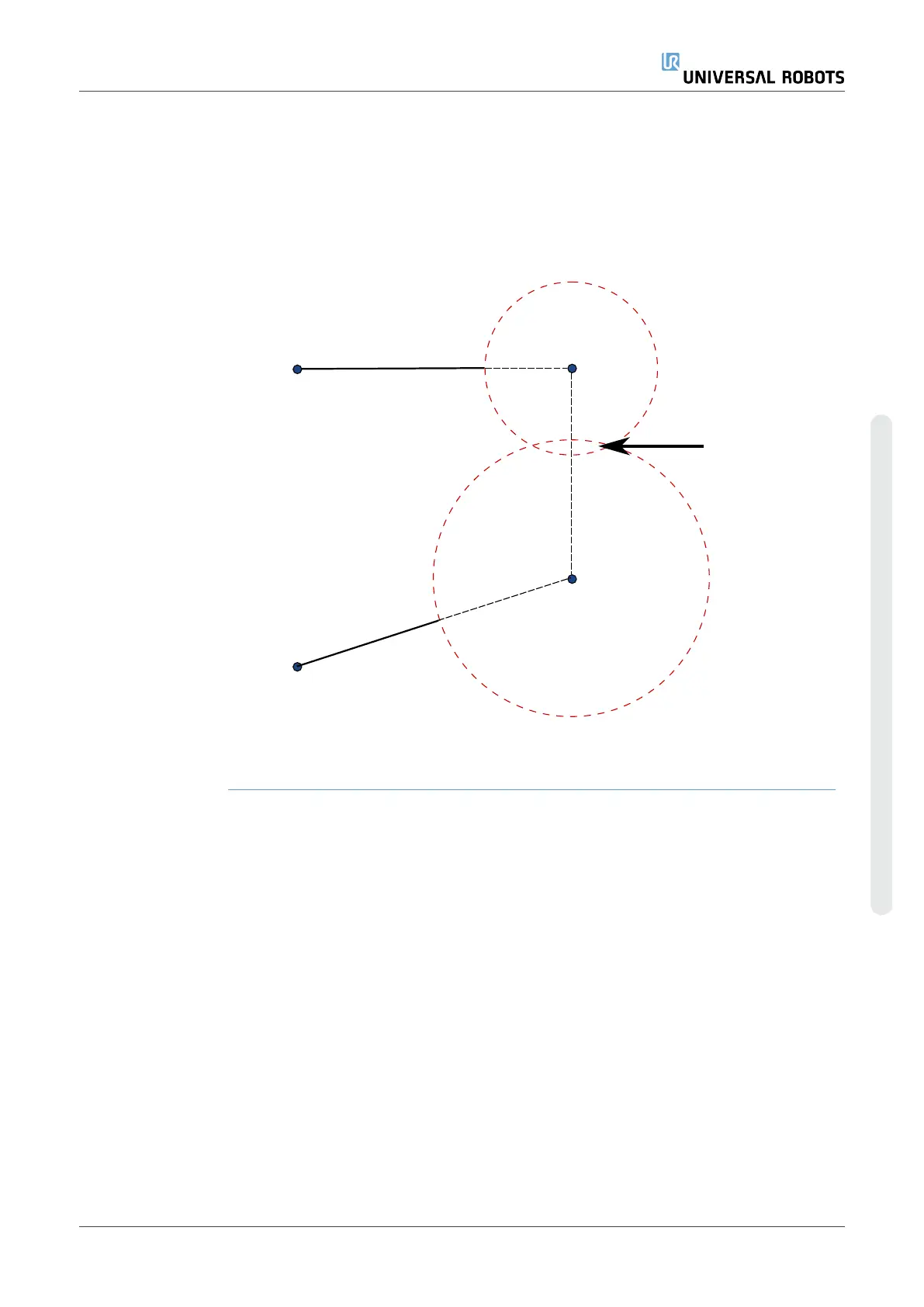